Common household pests like bed bugs can be very upsetting and inconvenient. Beds, mattresses, and other furniture are known to be infested by these microscopic insects, which feed on human blood.
It is critical for people to comprehend the nature of these pests, their behaviour, and efficient ways of prevention and extermination given the current increase in bed bug prevalence.
What Are Bed Bugs?
Bed bugs are tiny parasitic insects from the Cimicidae family, and their scientific name is Cimex lectularius. They have a flat, oval-shaped body, no wings, and a reddish-brown tint. Bed bugs are nocturnal pests that mostly eat blood during the night, both from humans and animals.
Appearance and Characteristics
Bed bugs can be identified thanks to their distinctive physical traits. They are around the size of an apple seed and range in length from 5-7 millimeters. Their flat bodies enable them to conceal themselves in small fissures and crevices. Bed bugs have six legs and antennae, and after feeding, their bodies swell and lengthen.
Life Cycle of Bed Bugs
Effective bed bug control requires an understanding of their life cycle. Egg, nymph, and adult stages make up the incomplete metamorphosis that bed bugs go through. The eggs are about 1 millimetre and are white. Nymphs are smaller and lighter coloured than adult bed bugs but look similar. They go through multiple molts before becoming adults.
Signs of Bed Bug Infestation
The look of bed bug bites might vary, and they can itch and hurt. On exposed body parts like the face, neck, arms, and legs, the bites often show up as tiny, red, itchy welts. It can be difficult to determine a bed bug infestation merely based on bites because some people may not react visibly to bed insect bites.
Visual Clues of Infestation
In addition to bites, there are additional outward indications of a bed bug infestation. Look for dark marks or stains on furniture, bedding, or mattresses that were left behind by bed bugs. Additionally, exoskeletons that have been shed by bed bugs may be present. Blood might be a sign of bed insect feeding activity if it appears on sheets or pillowcases.
Musty Odor and Stains
A musty smell in the affected area is another sign that you have bed bugs. When bed bugs are present in great numbers, their pheromones can produce a strong odor. Additionally, bed bug excrement can leave rust- or dark-colored stains on your bedding or walls.
Common Bed Bug Habitats
Due to the optimal conditions they offer for survival, beds, mattresses, and the areas around them are frequently where bed bugs are discovered. In addition to bed frames and headboards, they can conceal themselves in mattress seams, folds, and tufts. Although they frequently begin in bedrooms, infestations can swiftly spread to other parts of the house.
Furniture and Upholstery
Bed bugs can also infest other pieces of furniture and upholstery, such as couches, chairs, and recliners, in addition to beds. They can conceal themselves beneath flaky wallpaper or in the pores and cracks of wooden furniture. Bed bugs have a lot of hiding places in upholstered furniture, so it’s important to check and treat any locations they might be.
Cracks and Crevices
Bed bugs are adept at locating little hiding places, especially in cluttered settings. They can fit into gaps and fissures in baseboards, walls, floors, and electrical outlets. Bed bug infestations can happen in both residential and commercial structures since they can readily move from one place to another through furniture or personal items.
Types of Bugs in Bed
1. Bed Bugs (Cimex lectularius)
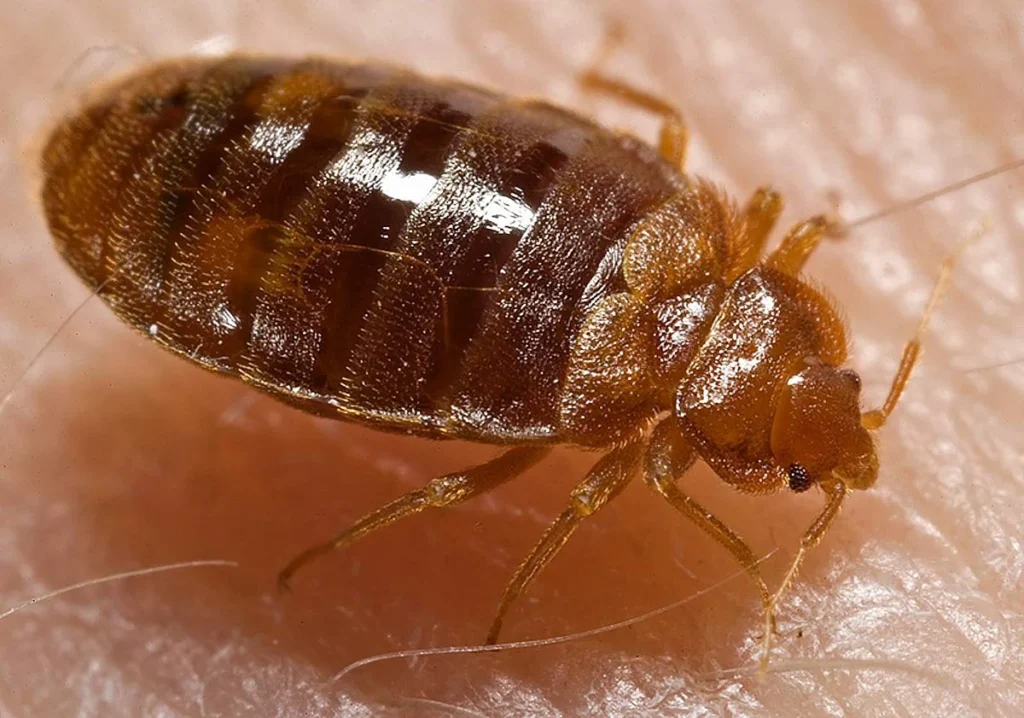
The main insects linked to bed infestations are bed bugs, also called as Cimex lectularius in science. These flat, oval, reddish-brown insects get their blood from people and other animals. Due of their nocturnal habits, bed bugs often spend the day hiding in cracks and crevices next to beds and other furniture. To feed on their hosts, they emerge at night, leaving behind irritating bites as proof of their presence.
2. Dust Mites (Dermatophagoides)
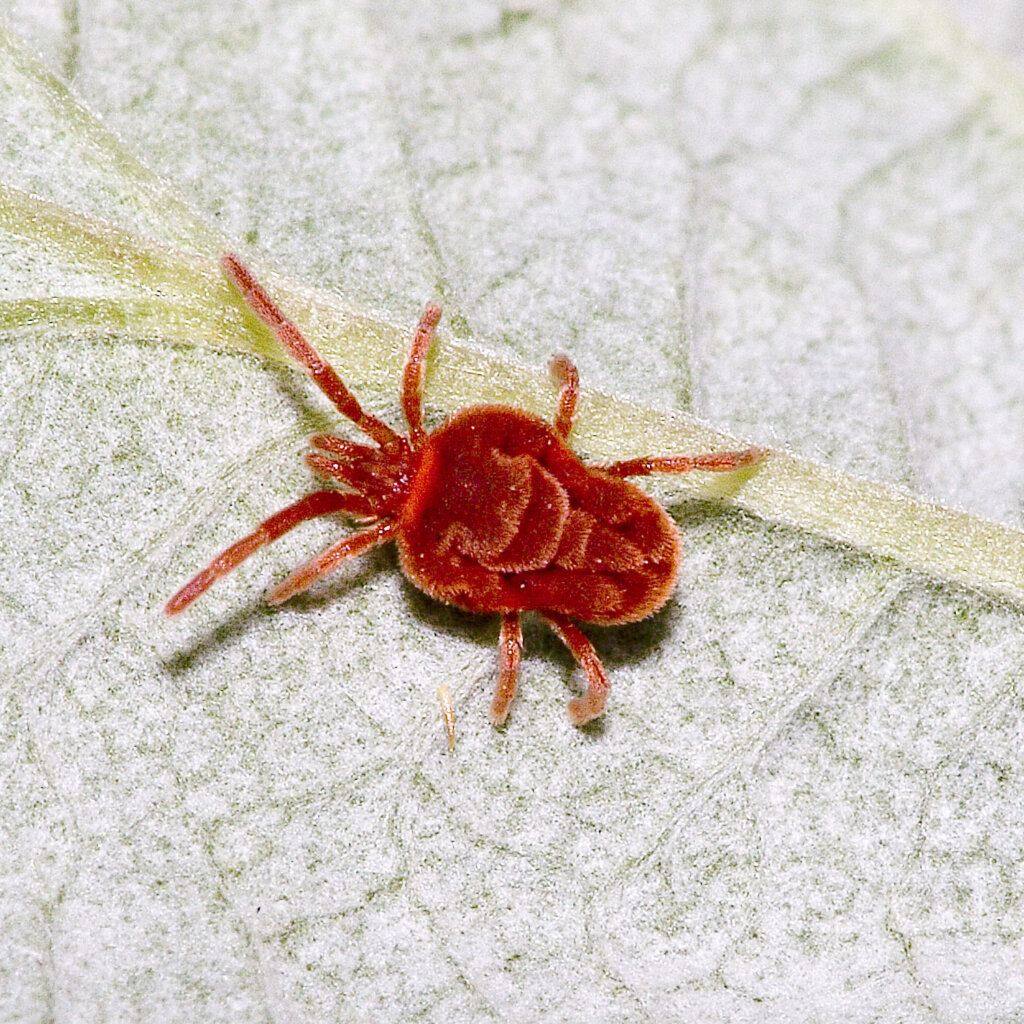
Dust mites are tiny arachnids, not technically insects, yet they are frequently found in bedding components like pillows, mattresses, and blankets. These small invertebrates live in warm, humid conditions and devour dead skin cells. Some people may experience allergic reactions from dust mites, resulting in sneezing, coughing, and itching as symptoms. They can be fewer if bedding is regularly washed in hot water.
3. Fleas (Ctenocephalides)
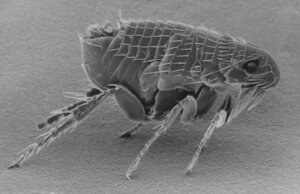 Fleas are tiny, wingless insects that are frequently connected to animals, especially dogs and cats. If there is a severe flea infestation in the house, they can also infest the bedding areas. Fleas are well recognized for their ability to jump, and their bites can be extremely itchy and uncomfortable. Infestations in pets and bedding areas can be avoided with regular flea treatments and good pet cleanliness.
Fleas are tiny, wingless insects that are frequently connected to animals, especially dogs and cats. If there is a severe flea infestation in the house, they can also infest the bedding areas. Fleas are well recognized for their ability to jump, and their bites can be extremely itchy and uncomfortable. Infestations in pets and bedding areas can be avoided with regular flea treatments and good pet cleanliness.
4. Carpet Beetles (Anthrenus)
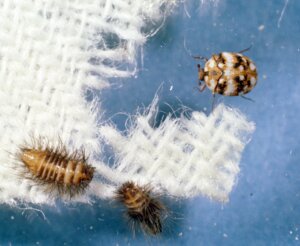 Small insects known as carpet beetles eat various items, such as clothing, furniture, and carpet fibers. Although they aren’t specifically related to beds, they can infest neighboring objects like carpets and furniture and possibly find their way onto the bed. Larvae of the carpet beetle can ruin materials and induce allergic reactions in some people. Infestations of carpet beetles can be avoided with routine vacuuming and garment storage.
Small insects known as carpet beetles eat various items, such as clothing, furniture, and carpet fibers. Although they aren’t specifically related to beds, they can infest neighboring objects like carpets and furniture and possibly find their way onto the bed. Larvae of the carpet beetle can ruin materials and induce allergic reactions in some people. Infestations of carpet beetles can be avoided with routine vacuuming and garment storage.
5. Booklice (Liposcelis)
 The microscopic insects known as booklice, or psocids, are typically found in moist, humid surroundings. They don’t bite or offer any serious health dangers, but they can occasionally be found in mattresses, especially if the bedroom has a high humidity level. A high level of wetness in the area may be indicated by the presence of booklice, which consume mold, fungi, and other organic waste. Infestations of booklice can be avoided by maintaining sufficient ventilation and lowering humidity levels.
The microscopic insects known as booklice, or psocids, are typically found in moist, humid surroundings. They don’t bite or offer any serious health dangers, but they can occasionally be found in mattresses, especially if the bedroom has a high humidity level. A high level of wetness in the area may be indicated by the presence of booklice, which consume mold, fungi, and other organic waste. Infestations of booklice can be avoided by maintaining sufficient ventilation and lowering humidity levels.
6. Spider Beetles (Ptinidae)
 Due to their lengthy legs, spider beetles, which are tiny oval-shaped insects, resemble spiders. They can infest foods that are stored, such as grains, cereals, and pet food, even though they are not normally connected to beds. Spider beetles may gain access to the bed if contaminated food is brought into the room or is kept nearby. Infestations of spider beetles can be avoided with proper food storage and routine pantry inspections..
Due to their lengthy legs, spider beetles, which are tiny oval-shaped insects, resemble spiders. They can infest foods that are stored, such as grains, cereals, and pet food, even though they are not normally connected to beds. Spider beetles may gain access to the bed if contaminated food is brought into the room or is kept nearby. Infestations of spider beetles can be avoided with proper food storage and routine pantry inspections..
7. Cockroaches (Blattodea)
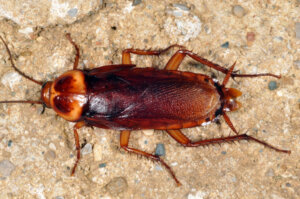 Cockroaches are hardy pests that can invade several rooms in a house, including beds. Although they are not restricted to beds, they can spend the day hiding in cracks and crevices and come out at night to search for food. It is well known that cockroaches are infection carriers and that they can cause allergic reactions in some people. Cockroach infestations can be avoided by keeping things clean, plugging any gaps where they can enter, and taking care of any sources of moisture or food.
Cockroaches are hardy pests that can invade several rooms in a house, including beds. Although they are not restricted to beds, they can spend the day hiding in cracks and crevices and come out at night to search for food. It is well known that cockroaches are infection carriers and that they can cause allergic reactions in some people. Cockroach infestations can be avoided by keeping things clean, plugging any gaps where they can enter, and taking care of any sources of moisture or food.
Remedies for Bugs in Bed
It’s essential to precisely identify the kind of bug infesting your bed before applying any therapies. Bed bugs, dust mites, fleas, and carpet beetles are typical bed bugs. Each must be eliminated using a particular strategy.
Bugs in Bed Remedies
Bed bugs are infamous for their toughness and capacity to conceal themselves in a variety of crevices and fissures. The following are some treatments for bed bugs:
1. Thorough Cleaning:
Start by vacuuming your entire bed, including the mattress, box spring, bed frame, and headboard. Dispose of the vacuum bag or empty the canister in a sealed plastic bag immediately after to prevent reinfestation.
2. Launder and Heat Treat:
Wash every piece of fabric, including clothing and bedding, in hot water, preferably over 120°F (49°C). To get rid of bed bugs and their eggs, dry the items on high heat for at least 30 minutes.
3. Encase Mattress and Box Spring:
Invest in high-quality mattress and box spring covers that are bed bug resistant. These covers act as a barrier, keeping bed bugs from getting in or out. Make sure the seals are tight.
4. Diatomaceous Earth:
Sprinkle food-grade diatomaceous earth around the bed frame, headboard, and other areas where bed bugs are likely to hide. This natural powder dehydrates and kills bed bugs by damaging their exoskeletons.
5. Professional Pest Control:
Consider hiring a professional pest control firm if the infestation is persistent or severe. They are equipped with the knowledge and specialized remedies to get rid of bed bugs completely.
Dust Mites Remedies
Microscopic bugs called dust mites can cause allergies and respiratory problems. Here are some methods to limit the number of dust mites in your bed.:
1. Wash Bedding Frequently:
Every week, wash all of your bedding—sheets, pillowcases, and blankets—in hot water. Dust mites are killed and their allergenic excrement is removed as a result.
2. Use Allergen-Proof Covers:
Encase your pillows, mattress, and box spring with allergen-proof covers. These covers create a barrier that prevents dust mites from entering or escaping.
3. Reduce Humidity:
Dust mites thrive in humid environments. Use a dehumidifier or air conditioner to maintain humidity levels below 50% in your bedroom.
4. Vacuum Regularly:
Vacuum your mattress, pillows, and carpets with a vacuum cleaner equipped with a HEPA filter. This helps remove dust mites and their waste from your sleeping area.
5. Steam Cleaning:
Consider using a steam cleaner to treat your mattress and upholstery. The high temperatures generated by steam can effectively kill dust mites.
Fleas Remedies
Fleas can infest your bed if you have pets. Here are some remedies to tackle a flea problem:
1. Treat Your Pets:
Consult with a veterinarian to choose appropriate flea treatments for your pets. Regularly bathe and groom your pets, and wash their bedding frequently.
2. Vacuum Thoroughly:
Vacuum your entire home, paying special attention to areas frequented by pets, such as beds, carpets, and upholstery. Dispose of the vacuum bag immediately.
3. Wash Bedding:
Wash your bedding, including sheets, pillowcases, and blankets, in hot water. Dry them on high heat to kill any fleas or eggs that may be present.
4. Use Flea Traps:
Placing flea traps close to your bed and in other potential flea-infested places. Fleas are drawn to and caught in these traps by their bright and sticky surfaces.
5. Professional Pest Control:
If the flea infestation doesn’t go away despite your best efforts, think about hiring a pest control company with experience. They are skilled in properly getting rid of fleas from your house.
Carpet Beetles Remedies
Your bed’s textiles and other materials may be harmed by carpet beetles. The following are possible treatments for a carpet beetle infestation:
1. Vacuum Regularly:
To get rid of carpet beetles and their larvae, constantly vacuum your carpets, rugs, and upholstery. Keep an eye out for gaps and cracks.
2. Launder Infested Items:
Wash any fabric, bedding, or clothing that has been contaminated in hot water. To destroy carpet beetles and their eggs, dry them in a hot environment.
3. Clean and Declutter:
Your bedroom should be clutter-free, and it should be routinely cleaned. Because dust, hair, and lint attract carpet beetles, maintaining a clean environment helps prevent infestations.
4. Store Seasonal Clothing:
Seasonal apparel should be kept in sealed bins or bags while not in use. This stops carpet bugs from getting to your clothing and ruining it.
5. Pest Control Products:
Use pest control products with carpet beetle control labels if possible. Take the required safety precautions and pay close attention to the instructions.
Prevention Measures for Bugs in Bed
The key to keeping bedbugs out of your bed is prevention. The following are some broad preventative measures:
1. Regular Cleaning:
Keep your bedroom neat and clutter-free. To lessen potential bug hiding places, regularly vacuum and wipe down surfaces.
2. Sealing Cracks and Crevices:
Fill up any gaps or cracks in your bedroom’s baseboards, walls, and furniture. This keeps bugs out of these spaces and keeps them from hiding.
3. Regular Inspection:
Check your mattress, linens, and bed on a regular basis for infestations or symptoms of pests. Prompt treatment is made possible by early discovery.
4. Bedding Hygiene:
Regularly wash your bedding, then dry it in a hot oven. To reduce attracting pests, avoid eating in bed.
5. Avoid Secondhand Furniture:
Inspect secondhand furniture thoroughly for signs of infestation before bringing it into your home. This includes beds, mattresses, and upholstered items.
By implementing these remedies and preventive measures, you can effectively combat bugs in your bed and create a clean and pest-free sleeping environment.
Conclusion
Your peace of mind may be disturbed by bed bugs, which can be a pain. Maintaining a bed bug-free environment requires knowledge of their behavior, infestation warning indicators, and efficient preventive and treatment techniques. You may reduce your chance of contracting bed bugs and provide a comfortable living environment by maintaining good hygiene, doing routine inspections, and calling in experts when necessary.







+ There are no comments
Add yours